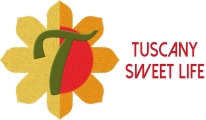Choose what to see and to do in Prato

Prato is famous for its hundred chimneys, the textile, and the Sacred Belt.

The city of Prato is like an outdoor museum of contemporary art because many squares were decorated with monumental sculptures. Moreover, the city has several monuments of great historical and artistic interest. During the construction of many buildings, especially those medieval, were often used marbles of two different colors, which characterized the two colors of the Romanesque Type: the limestone of Retaia (white) and the coil of Monteferrato (green).
Museums exhibit important works by artists who have characterized the history of the Italian Renaissance such as Filippo Lippi and Filippino Lippi, Bernardo Daddi, Giovanni da Milano and Botticelli. Prato also counts four churches built after some miraculous events – such as S. Maria delle Carceri and St. Maria del Giglio – the others instead are located outside the city. Another famous church in Prato is the Sacred Belt, which according to the tradition, was identified as the belt of the Virgin. Prato is famous also for the production of textile products.
[table colwidth=”20|100|50″ colalign=”left|left”]
AREA; Bisenzio valley
TYPE; City of Art and the capital of the Province of Prato
COORDINATES; 43°52′50.93″N 11°5′47.62″E
ALTITUDE;61 meters o.s.l.
PRODUCTS;biscuits of Prato, Prato mortadella, vermouth, tissues
SPORT;hiking hiking, horseback riding, golf, cycling, adventure park
BORDERS; Agliana (PT), Calenzano (FI), Campi Bisenzi (FI), Carmignano (PO), Montemurlo (PO), Poggio a Caiano (PO), Quarrata (PT), Vaiano (PO)
HOW TO GET; CAR highway A1 Milano Napoli, highway A11 Fireze Pisa Nord or Statale SS325 Prato Bologna / TRAIN line Firenze, Prato, Pistoia, Lucca / BUS CAP autolinee , Lanzi autolinee
[/table]
 Touristic Information
Touristic Information
Prato Municpality
Piazza del Comune, 2 – 591000- Prato (PO)
www.comune.prato.it
Phone: +39 0574 18361
Tourist Office
Piazza Buonamici, 7 – 59100 Prato (PO)
info@pratoturismo.it
Phone: +39 0574 24112
WHAT TO SEE
Prato Castles
 Emperor’s castle
Emperor’s castle
Emperor's castle
 Zone: Bisenzio valley
Zone: Bisenzio valley
Type: medieval castle (XIII century) visited
Address: Piazza S. Maria delle Carceri – Prato
Phone: +39 0574 38207 +39 0574 24112
Opening hours: Tuesday to Saturday 9:00 am to 12:00 pm; Sunday 9:00 am to 12:00 pm and 3:00 pm to 6:00 am
Free entry
Also called Fortress of Santa Barbara, it was designed by Riccardo da Lentini, who was the architect of the Emperor Federico 2nd of Swabia. The Fortress was built between 1237 and 1248 and it represents the only example of Swabian architecture in Italy. It has a square plan, with eight towers at the corners and along the walls. During the 14th century this building was adapted by the government of Florence to a military garrison and a prison, by connecting it to the new circle of wall through a fortified elevated walkway, named Cassero.
From this unusual structure, recently restored and freely accessible, there is an excellent view over the monuments, the hills and the plains surrounding the city. Inside the towers works of the contemporary artist Salvatore Cipolla can be found. During the summer the castle hosts many events, concerts, and open air film screenings.
Churches of Prato
 Church of Santa Maria delle Carceri
Church of Santa Maria delle Carceri
Santo Stefano cathedral
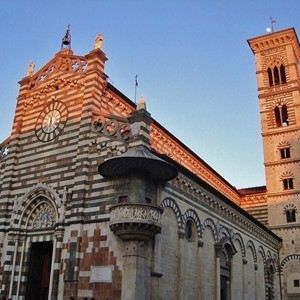 Zone: Bisenzio valley
Zone: Bisenzio valley
Type: Romanesque-Gothic church (12th -14th century)
Address: Piazza del Duomo – Prato
Phone: +39 0574-1835021
The Santo Stefano Cathedral is a splendid example of the Romanesque-Gothic architecture. The church has three naves and was built with a white marble (Alberese) and a green one(Serpentine). Dating from the twelfth century, during the following centuries it was restructured several times, as for example in the fifteenth century by Giovanni Pisano. Inside the Cathedral, the artist painted a wooden crucifix and in 1317 he created his last masterpiece, the Madonna della Cintola. In the transept (Main Chapel) there are frescoes by Filippo Lippi, Paolo Uccello and the Prato Alessandro Franchi. Between 1434 and 1438 the outer pulpit (Pulpit of Donatello) was created by Donatello and Michelozzo, which was intended for the exhibition of the relic.
La Sacra Cintolo (or Cingolo) – a thin green brocade woolen belt with some golden threads – is kept in the chapel. A tradition, also known in the 13th century, reported that the Virgin Mary the object gave to the Apostle Thomas, before being taken up into the Heaven.

The chapel was built between 1386-1390 with a project by Lorenzo di Filippo, in order to adequately guard the Sacra Cintola. The interior was painted by Agnolo Gaddi.
Church of Santa Maria delle Carceri
 Zone: Bisenzio valley
Zone: Bisenzio valley
Type: Renaissance church (15th century)
Address: Piazza S. Maria delle Carceri – Prato
This is a Renaissance church with a Greek cross plan, designed by Giuliano da Sangallo (1485-1492), and desired by the will of Lorenzo Medici (“The Magnificent”) on the remains of an ancient prison. Inside there are majolica decorations by Andrea della Robbia and windows designed by Domenico Ghirlandaio. The high altar, designed by Sangallo, contains the fresco of the Madonna delle Carceri between the Saints Leonardo and Stefano (14th century) that is considered miraculous.
St. Nicholas Monastery
 Zone: Bisenzio valley
Zone: Bisenzio valley
Type: convent and monastery (14th -17th century) visitable
Address: Piazza Cardinal Nicholas, 6 – Prato
Phone: +39 0574 26103
The well-preserved complex dates back to the 14th century. In the 17th century it was transformed into a convent. The spaces of the convent still exist, such as dining halls, the chapter house, the Renaissance cloister, the vegetable and ornamental gardens that made this complex a kind of small town within the city. Moreover, from the late 17th century, Gosto’s garden includes the so-called “Scala Santa.”
Basilica of San Vincenzo
 Zone: Bisenzio valley
Zone: Bisenzio valley
Type: monastery and convent (16th -18th century)
Address: Piazza San Domenico – Prato
The Dominican convent was built in 1503, in honor of the Saint Vincent Ferrer. In the second half of the 16th century, the convent had a great development thanks to the work of Sister Caterina de’ Ricci. The church was renovated in the 18th century after the canonization of the woman, whose remains are preserved in a silver urn under the main altar. From an artistic point of view, the church can be considered one of the most important examples of late Baroque Style, because it presents a balanced combination between frescoes, stucco reliefs and altars.
Inside, the walls are decorated with reliefs, works of Ticciati and Vincenzo, illustrating the history of Saint Caterina and her miracles. In the marble altars there are works by Vincenzo Meucci and frescoes by Pucci. On the main altar a wooden cross (16th century) is flanked by two large blades by Michele delle Colombe (1576). Noteworthy is a majolica bust of the 16th century in the Chapel of Madonna dei Papalin.
Chiesa di San Domenico
 Zone: Bisenzio valley
Zone: Bisenzio valley
Type: convent-monastery (14th -17th century) visitable
Address: Piazza San Domenico – Prato
Phone: +39 0574 440501
Website: www.diocesiprato.it
Email: musei.diocesani@diocesiprato.it
The church and the adjacent convent were built in 1281. The construction is an interesting example of Mendicant Style church, where the architectural austerity is balanced with structural and decorative elements. After a fire (1647), the church was restructured, but that changed the internal aspect. The facade has an original duotone of alberese and serpentine stone (white and green). The bell tower dates back to 1314. Inside there are works by Lorenzo di Niccolò (late 14th century) and paintings by Matteo Rosselli and Vincenzo Dandini.
Currently, the convent hosts the Museum of Mural Painting (Museo di Arte Murale) that preserves various frescoes and many sinopias.
Parks and gardens of Prato
Cascine di Tavola Park
 Zone: Bisenzio valley
Zone: Bisenzio valley
Type: historical park, with golf and horse riding – free access
Address: Via del Crucifix Cross – Prato
Phone: +39 0574 55921
The park is located between Cafaggio and Poggio a Caiano, near Tavola. It is a large park with woods and wetlands that were previously included in the extensive farm linked to the Villa Medicea “Ambra” of Poggio a Caiano. The main building of the estate is named Le Cascine di Tavola and its construction is attributed to the architect Giuliano da Sangallo (15th century).
The park also houses the Golf Club “Le Pavoniere”, included in an area, enclosed by walls, called the Pavoniere Park. The area was set up in the 19th century as a romantic type park with walkways, waterways, bridges and trees.
Boscotondo Adventure Park
Zone: Bisenzio valley
Locality: Gavigno
Type: Adventure park
Just like in a fairy tale, children can enter into an enchanted forest with tall trees beyond 30 meters and will discover games between the trees like Tibetan and Nepalese bridges, suspended platforms, jumping with lianas, crossing barrels and Tyrolean pulleys. There are two paths for children and two more challenging paths for adults.
The park also has also a cheerful and colored restoration point named the “Chioschetto”.
Nature reserves of Prato

Calvana natural riserve
 Zone: sub-Apennine
Zone: sub-Apennine
Municipalities: Prato (PO) Vaiano (PO) and Cantagallo (PO)
Type: nature conservation area ANPIL with caves, small villages and hiking trails
Address: Visitor Centre – via Bertini – locality Schignano – Vaiano (PO)
Phone: +39 0574 983228
The reserve was established to safeguard the special features of the area: wide meadows, woods, and caves, and the characteristic Albarese and Colombino stone. The Visitor Centre provides information on pathways and hiking routes, and guided tours itineraries.
Monteferrato natural riserve
 Area: pre-Apennine
Area: pre-Apennine
Municipalities: Prato (PO) Montemurlo (PO) and Vaiano (PO)
Type: nature conservation area with ANPIL center for natural sciences and exotic animals
Address: Visitor Centre – Via Toscanini, 1 – Montemurlo (PO)
Phone: + 39 0574 558327
Website: www.monteferrato.it
Email: info@monteferrato.it
The area Monteferrato concerns the territories of the three municipalities of Montemurlo, Prato and Vaiano. The reserve includes a wide variety of environments and landscapes, forests, hilly farmland and particular geological formations. The special geological and floral characteristics make it the subject of careful study. The paths of the network allow a wide range of excursions, from trekking routes to archaeological observations.
Currently, it is included in the Villa-Javello Farm and Health Sciences Center (park, wildlife oasis and library). Nearby to the city of Prato the Serpentine Park and the Natural Science Center are located.
ART AND MUSEUM
Prato Museums
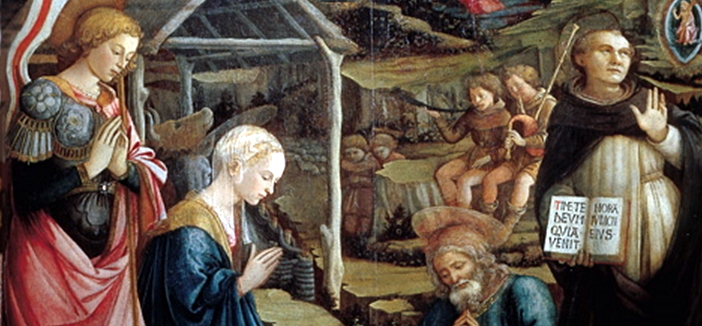 Museum of Mural Painting
Museum of Mural Painting
Center for Contemporary Art Luigi Pecci
 Area: Bisenzio valley
Area: Bisenzio valley
Type: Museum of Contemporary Art
Address: Viale della Repubblica, 277 – Prato
Phone: +39 0574 5317
Opening hours: 10:00 am to 7:00 pm every day – closed on Tuesday
Website: www.centropecci.it
Email: info@centropecci.it
The construction is based on the project of the architect Italo Gamberini, it is an articulated complex of volumes supported by metal framework, in which large walls have been incorporated. The center was open in 1988, in memory of Luigi Pecci, and it houses a permanent exhibition of contemporary art, international events are also organized there. In the garden many important sculptures are placed, such as the “Colonna Caduta”, steel works of the French Anne and Patrick Poirier, or “Scultura Prato” by Mauro Staccioli. The museum also has an important Center for Information and Documentation (CID) and a large library specialized in contemporary art.
Museum of Mural Painting
 Area: Bisenzio valley
Area: Bisenzio valley
Type: Art museum (frescoes from the fourteenth to the seventeenth century)
Address: Piazza San Domenico – Prato
Phone: +39 0574 440501
Website: www.diocesiprato.it
E-mail: musei.diocesani@diocesiprato.it
Opening hours: 9:00 am to 1:00 pm every day; Monday, Thursday and Friday 2:30 pm to 6:30 pm; Closed on Tuesday
Tickets: € 5.00 full – € 3.00 reduced
The museum is located inside the cloister of the Church of San Domenico. It is the first Italian structure conceived as an “active recovery” of stripped frescoes, sinopias, and graffiti. The museum also contains stripped frescoes, sinopias, and graffiti from 14th-15th century, and there are works of Niccolò Gerini, Agnolo Gaddi, Paolo Uccello, and Il Volterrano. A refined example of late Gothic painting is a triptych by Lorenzo Monaco (around 1425). Another important work is the “Tabernacolo del Canto al Mercatale” painted by Filippino Lippi and appreciated for its marvelous chromatism.
Textile Museum
 Area: Bisenzio valley
Area: Bisenzio valley
Type: industrial archaeological museum (XIX century)
Address: Via Puccetti, 3 – Prato
Phone: +39 0574 611503
Website: www.museodeltessuto.it
Opening hours: Tuesday to Friday, 7:00 pm to 11:00 pm; Saturday 10:00 am to 3:00 pm; Sunday 3:00 pm to 7:00 pm; closed on Mondays
Tickets: € 3.00
It is the only museum in Italy entirely dedicated to art and textile technology. It is located in the former Cimatoria Campolmi. The museum collection consists of a large number of textile fragments, produced in different countries around the world, from ancient times to the present day. Many clothes of the 18th and nineteenth century, lace, and ethnic fabrics enrich the exhibition. A path illustrates the production of woolen cloth from the Middle Ages to the 20th century, through a series of reconstructions, historical documents, and vintage objects.
Opera del Duomo Museum
 Area: Bisenzio valley
Area: Bisenzio valley
Type: Museum of Sacred Art (XII-XIX century)
Address: Piazza del Duomo, 49 – Prato
Phone: +39 0574 29339
Email: musei.diocesani@diocesiprato.it
Opening hours: 9:00 am to 1:00 pm every day; Thursday, Friday and Saturday 2:30 pm to 6:30 pm; closed on Tuesday
Tickets: € 5.00 full – € 3.00 reduced
The museum is located inside the Bishop’s Palace and preserves paintings of the 12th-19th century, objects and sacred art paraments, Etruscan remains, materials from the St. Stephen’s Cathedral (Duomo) and from other nearby churches. Among the masterpieces there is the original parapet of the Pulpito di Donatello, representing a dance of putti, sculpted by Donatello and his pupils. In the room of the Sacra Cintola works relating to the cult of the Marian relic are displayed, including silvers, and reliefs and precious fabrics from the 14th century.
Museo Civico di Prato

Area: Bisenzio Valley
Type: Renaissance art Museum (14th e 15th century)
Address: Piazza del Duomo, 49 – Prato
Tel.: +39 0574 29339
The museum is located inside the Palazzo Pretorio (Seat of the Podestà) and dating back to the 12th century. Afterward it was merged with other three buildings. The museum contains some of the most important paintings from the 12th century until the Renaissance: From Filippo Lippi and Filippino Lippi, to Bernardo Daddi, Giovanni da Milano, and Sandro Botticelli. Currently the museum is closed for restoration.
Open-air Museum of Contemporary Art
 Area: Bisenzio valley
Area: Bisenzio valley
Type: Open-air museum of contemporary art with monumental sculptures
Monumental sculptures
Antonio Garella – Monument to Francesco Datini, in Piazza del Comune
Oreste Chilleri – Monument to Gaetano Magnolfi, in Piazza della Pietà
Alessandro Lazzerini – Monument to Giuseppe Mazzoni, in Piazza del Duomo
Antonio Maraini – War Memorial of Prato, in the square of the Prisons.
Henry Moore – Square shape with cut (1974)
Pomodoro – Isla Nigra (1975-1976), in Via Carlo Marx gardens.
Luciano Minguzzi – Ippolito (1978), at the Church of the Holy Family
Emilio Greek – Dormition of the Virgin (1982-1984), Cathedral-Chapel of the Holy Girdle
Staccioli – Sculpture Prato (1988), in the garden of the Centre for Contemporary Art Luigi Pecci
Anne and Patrick Poirer – Exegi monumentum aere perennius (Poirer) | Exegi monumentum aere perennius (1988), in the garden of the Centre for Contemporary Art Luigi Pecci
Ben Jakober and Jannick Vu – Mazzocchio (1994)
Sol LeWitt – Irregular Tower (1997), in the garden of the Centre for Contemporary Art Luigi Pecci
Ignazio Fresu – The Wanderer and his Shadow (2011), Spanish Steps University-Prato-train station Porta Serraglio
Natural Sciences center of the Serpentine Park
 Area: Bisenzio valley
Area: Bisenzio valley
Locality: Galceti
Type: center for natural sciences with astronomical observatory and aviary with exotic birds
Phone: +39 0574460503
Website: www.csn.prato.it
Email: info@csn.prato.it
Opening hours: Wednesday to Sunday 9:30 am to 12:30 pm and 3:00 pm to 7:00 am – closed Monday and Tuesday; dogs or pets are not allowed.
Tickets: € 3.00
Services: Guided tours by appointment
The center is housed in the Serpentine Park, that is an environmental park intended to study deer and wild boar, and migratory birds. Both the park and the center are included in the protected area ANPIL of Monferrato. The main characteristic of the park is the geological formation of a particular mineral that emerges from the ground, the Serpentine with its typical green color.
Within the center there is the Natural History Museum. The collection includes birds, mammals, fish, reptiles, insects, shells, minerals, rocks, and herbaria. Moreover, there are findings of exotic origin, but also European and from Prato. Finally, there is an area that is dedicated to the archaeology sector.
WHAT TO DO
Events
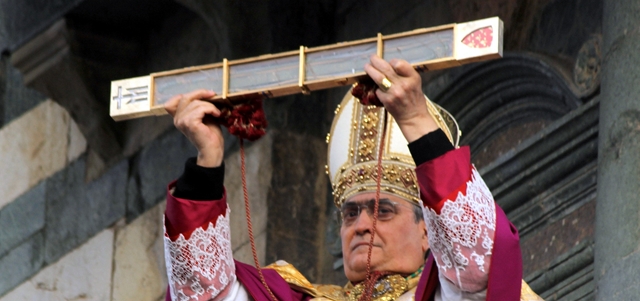 Sacred Belt
Sacred Belt
Exposition of the Holy Belt
 Type: religious festival
Type: religious festival
When: September 8
A historical procession takes on the day of the Nativity of Our Lady, and to pay homage to the Holy Belt. It’s a costume parade along the streets of the center, escorted by the Men at Arms, the Municipal Valets and hundreds of participants. The procession ends with the exhibition of the Holy Belt. The festival program is enriched by the performance of the flag wavers, the shooting competition with the bow, the medieval market with re-enactments of ancient crafts and traditions, musical performances, and fireworks.
Contemporary festival
 Type: show
Type: show
When: late May
It is an international theater festival whose first edition was held in 1999. The event brings leading artists of contemporary theater scene together, both national and international.
PratoEstate
 Type: art and music
Type: art and music
When: from June to September
The event takes every summer place, in the main squares and in the Emperor’s Castle with many local events including concerts, theater, open-air cinema.
ITINERARIES
Nature itineraries
Old gardens
[table colwidth=”20|100|50″ colalign=”left|left”]
TYPE;Historical and cultural itinerary
AREA;Monferrato natural reserve
DEPARTURE;Prato center
ARRIVAL; Prato center
LENGTH; 10 km
TRAVEL TIME;half a day by car
DIFFICULTY;easy
ATTRACTIONS; villas and historic gardens
INFORMATION;Associazione Antichi Giardini via Masso dell’Anguilla , Vaiano (PO) Tel.:+39 335 5714647 +39 349 5758 140 +39 333 1391 777 info@antichigiardini.com www.antichigiardini.com
OPENING MONTHS;April, May, June to July (programming on the site) Tickets: € 5.00 visit, € 18.00 tour and products tasting
[/table]

The course is organized by the Ancient Gardens, that organizes guided tours of historic homes located in the towns of Prato, Montemurlo and Vaiano. Reservations are required. There are 16 villas open to visitors, but only during a certain period of the year.
In Prato the villas open to the visitors are: Villa del Palco, Villa del Quercetino and Villa Rucellai.
Spazzavento trail
[table colwidth=”20|100|50″ colalign=”left|left”]
TYPE;nature hiking trail
AREA;Monferrato natural riserve
DEPARTURE;Villa Verzoni, Prato
ARRIVAL; Monte Le Coste
LENGTH; 4 km
TRAVEL TIME;1 hour and half
DIFFICULTY;medium
ATTRACTION; Fosso della Casaccia, Monte Lopi
INFORMATION; Visitor Center ANPIL Monteferrato via Toscanini, 1 Montemurlo +39 0574 558327 info@monteferrato.it www.monteferrato.it
[/table]
Monteferrato trail
[table colwidth=”20|100|50″ colalign=”left|left”]
TYPE;nature trekking trail
AREA;Monferrato natural riserve
DEPARTURE;Parco di Galceti, Prato
ARRIVAL; Poggio Monteferrato
LENGTH; 3 km
TRAVEL TIME;1 hourand half
DIFFICULTY;medium
ITINERARY CAI N°; 12
ATTRACTION; Poggio Monteferrato
INFORMATION; Visitor Center ANPIL Monteferrato via Toscanini, 1 Montemurlo +39 0574 558327 info@monteferrato.it www.monteferrato.it
[/table]

Starting from Parco di Galceti in Prato, the path goes on the track CAI n. 12, reaching the peak in the area Poggio Monteferrato, which represents an important panoramic point, before going back down to the Prato plain up to Montalbano. The route crosses one of the most interesting and suggestive naturalistic places that are characterized by a particularly rocky vegetation and a sparse maritime pine forest.
CULTURE
History about Prato
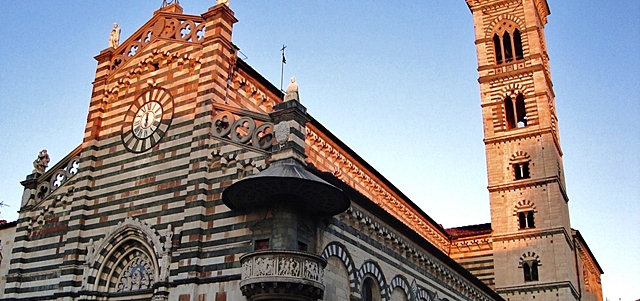 Prato Cathedral
Prato Cathedral
One hundred chimneys

The Prato area was already inhabited in the Palaeolithic (35,000 BC). The first civilization whose more consistent elements have been identified is that of the Etruscans. Traces of a big city were found in the town of Gonfienti, in the surrounding of Florence. In addition, the findings of excavations confirm that, in the 6th century BC, weaving was practiced. Also a domus (big house) of the Roman period was found, that was developed on the model of the Pompeian villas, with a network of water channels that are still partly functional.
Further an exceptional amount of Greek pottery was found in red and black figures, among them being a kilix attributed to one of the most important Greek artists of the 5th century, Douris. In the early Middle Ages, the Byzantines and then the Lombards settled in the area.
The history of the city began in the 10th century. We know about the existence of two distinct villages during that time: Borgo al Cornio and Castrum Prati. These two urban centers were fused during the next century and the Alberti family, feudal lords of Castrum Prati, obtained the imperial investiture. For two centuries the town had a strong urban expansion, mainly due to thriving wool industry and the strong devotion to the relic of the Holy Girdle.
After the siege of 1107 by the militias of the Countess Matilda of Canossa, the counts Alberti retreated in the castles of the Bisenzio Valley and the village became a free town. To escape the expansionism of Florence and temper the internal struggle for control of the power, in 1326 the city was submitted to Robert of Anjou, King of Naples, but, in 1351, Queen Joanna of Anjou sold Prato to Florence for 17,500 gold florins. Despite the loss of independence, the city continued to develop in the following centuries, increasingly tying their fortunes in Florence. With the settlement of the Habsburg-Lorraine dynasty at the helm of the Grand Duchy of Tuscany (18th century), the city was embellished and there was also a significant cultural development.
After the unification of Italy, the vast industrialization of the textile industry was followed by a strong demographic growth. The concentration of textile factories was so high that Prato became known as “the city of a hundred chimneys” (some of them have survived, as the Cimatoria Campolmi). The Prato economy is still predominantly based on the textile industry, including the treatment of “regenerated wool”, from some rags and used clothes.
Important artistic and historical figures were born in Prato such as the painters Baccio della Porta (1472), better known as Fra ‘Bartolomeo, Filippo Lippi (1452-1465) and his son Filippino Lippi (1457-1504), and the neoclassical sculptor Lorenzo Bartolini (1777); St. Caterina de’ Ricci (1547-1590), and Filippo Mazzei (intellectual, 1730-1816) who was one of the creators of the Constitution of the United States of America.
Curiosity about Prato
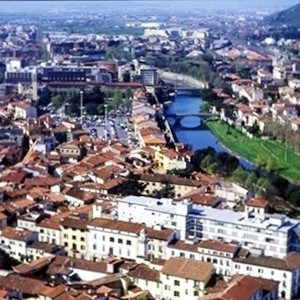 Prato was the setting of several films such as:
Prato was the setting of several films such as:
Giovanna (1956): documentary about the textile workers by filmmaker Gillo Pontecorvo,
Berlinguer I love you (1977),
The gruff (1985),
My Friends Part III (1985),
Five days of the storm (1997),
Mr. Quindicipalle (1998),
Neither earth nor sky (2003),
All attack (2005),
Letters from the Sahara (2006),
Sweet Sweet Marja (2006)
GASTRONOMY
Typical Food
Sedani ripieni
 Stuffed celery is a dish of celery ribs that requires a lot of preparation and it is tradition to cook it for September 8, on the occasion of the Feast of Our Lady of the Fair.
Stuffed celery is a dish of celery ribs that requires a lot of preparation and it is tradition to cook it for September 8, on the occasion of the Feast of Our Lady of the Fair.
Pappa al pomodoro
 Pappa al pomodoro, was once considered a modest dish, but currently the restaurants offer it as a very delicious first dish using top-quality ingredients as the bread of Prato, Carmignano oil and tomatos of the area.
Pappa al pomodoro, was once considered a modest dish, but currently the restaurants offer it as a very delicious first dish using top-quality ingredients as the bread of Prato, Carmignano oil and tomatos of the area.
Pappardelle with hare sauce
 Pappardelle (a kind of wide noodles) are served with a hare meat sauce. The hare is often cooked in its own blood or with the use of many odorous herbs.
Pappardelle (a kind of wide noodles) are served with a hare meat sauce. The hare is often cooked in its own blood or with the use of many odorous herbs.
Tortelli di patata
 Tortelli di patate are traditionally famous for their preparation. Every restaurant, every family, has its own particular recipe. In general, on the weekends, the population walks along the street, looking for the best variant of tortelli di patate in order to tell and recommend to friends and acquaintances.
Tortelli di patate are traditionally famous for their preparation. Every restaurant, every family, has its own particular recipe. In general, on the weekends, the population walks along the street, looking for the best variant of tortelli di patate in order to tell and recommend to friends and acquaintances.
Peaches
 In late March of 1861, in the Inn Contrucci in Piazza Duomo, the community decided to celebrate the Unification of Italy with a dinner. Among the many delicacies served, these sweets peaches achieved a high success and they soon became a local specialty.
In late March of 1861, in the Inn Contrucci in Piazza Duomo, the community decided to celebrate the Unification of Italy with a dinner. Among the many delicacies served, these sweets peaches achieved a high success and they soon became a local specialty.
Typical products of Prato
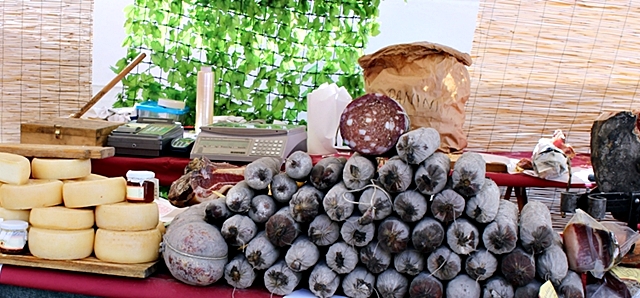 Cheeses and meats
Cheeses and meats
Biscuits of Prato
 The cantucci or cantuccini, also known as “Prato Biscuits”, are dry almond biscuits, made by cutting slices of the loaf of still hot dough. They are part of the most typical desserts of the traditional Tuscan cuisine, especially if accompanied by Vin Santo.
The cantucci or cantuccini, also known as “Prato Biscuits”, are dry almond biscuits, made by cutting slices of the loaf of still hot dough. They are part of the most typical desserts of the traditional Tuscan cuisine, especially if accompanied by Vin Santo.
Bozza bread
 The Prato bread does not contain salt. This feature makes it versatile and easily adaptable with different flavors.
The Prato bread does not contain salt. This feature makes it versatile and easily adaptable with different flavors.
Mortadella
 It is a sausage whose origin dates back roughly to the 16th century. Of humble origins, it has been recalled to the contemporary taste through the use of meat choices. The uniqueness comes from the spiciness and the addition of a liqueur of bygone days, alkermes, normally only used for sweets.
It is a sausage whose origin dates back roughly to the 16th century. Of humble origins, it has been recalled to the contemporary taste through the use of meat choices. The uniqueness comes from the spiciness and the addition of a liqueur of bygone days, alkermes, normally only used for sweets.
TOURIST SERVICES
Where to eat in Prato
Restaurants and Taverns
Osteria Cibbé
Piazza Mercatale, 49 – 59100 Prato (PO)
Tel: +39 0574 607509
Website: www.cibbe.it
Email: info@cibbe.it
Services: traditional Tuscan cuisine – Closed Sunday
Aroma di … Vino
Via Santo Stefano, 24 – 59100 Prato (PO)
Tel: +39 0574 433800
Email: info@aromadivino.eu
Services: Vegetarian cuisine, traditional Tuscan cuisine – Closed for lunch on Monday, Tuesday and Wednesday
Ristorante Opera 22
Via Pomeria, 64 – 59100 Prato (PO)
Tel: +39 0574 606812
Website: www.opera22.it
Email: info@opera22.it
Services: traditional Tuscan cuisine, fish dishes, wine cellar with quality wines – Closed Monday, open Tuesday to Saturday for dinner, Sundays open for lunch and dinner.
